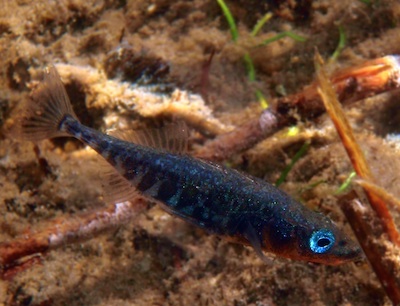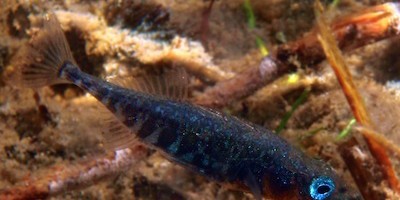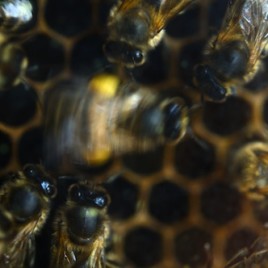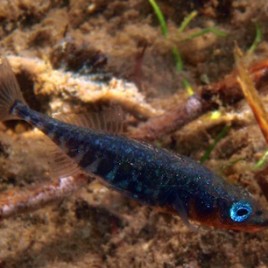
The offspring of Kennedy Lake sticklebacks like this one are less likely to survive if they have one high-armoured and one low-armoured parent, yet the two subtypes continue to interbreed instead of becoming separate species. (Photo credit: Kerry Marchinko)
Different-looking sticklebacks from Kennedy Lake on Vancouver island interbreed despite evolutionary pressure not to, according to a new study.
Genetic studies showed that fish with one parent that had lots of body armour and another parent with minimal body armour had a lower chance of surviving to adulthood than fish whose parents were both of the same type. Yet instead of living separate lives – and potentially evolving into different species – the sticklebacks have continued to interbreed for decades.
The existence of such a system is rare and offers a new puzzle for evolutionary theorists.
Original research paper published in the the journal Current Biology on May 22, 2014.
Names and affiliations of selected authors



